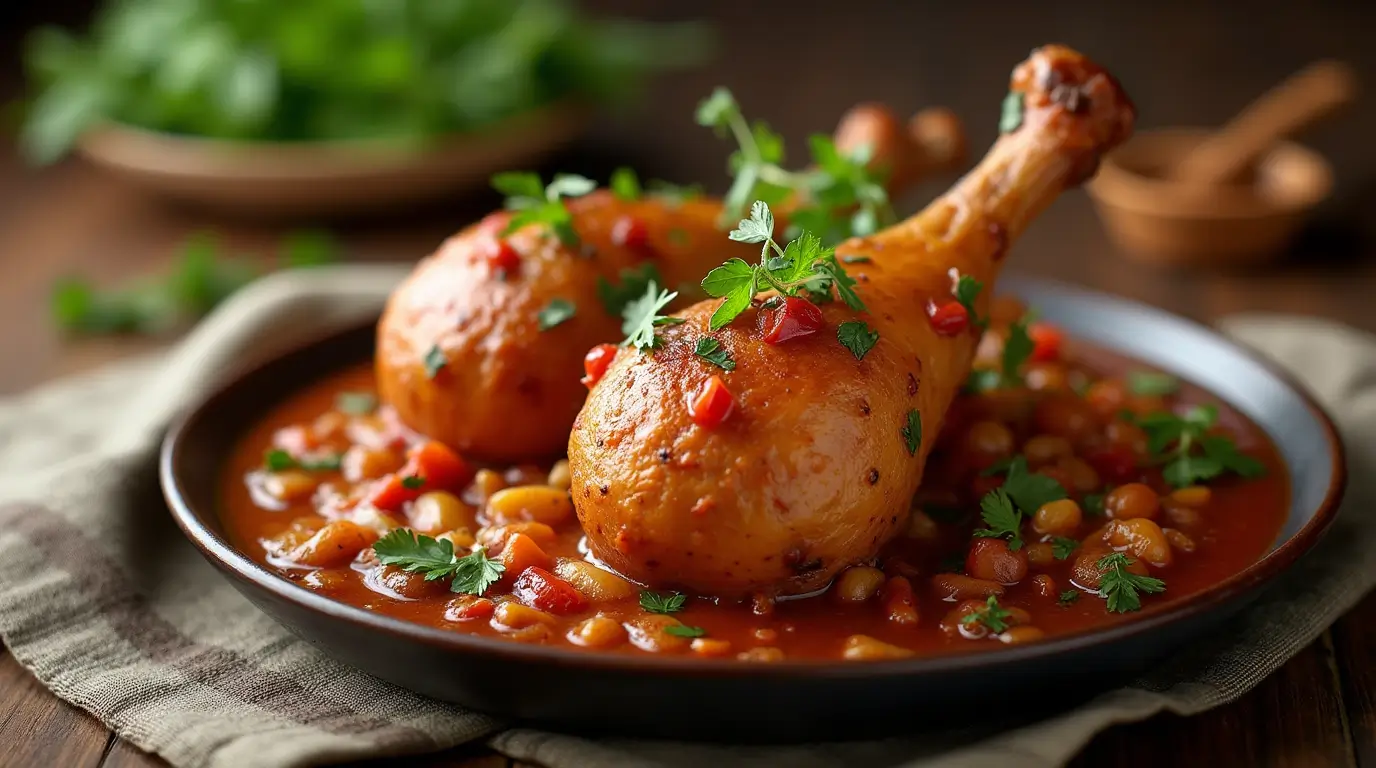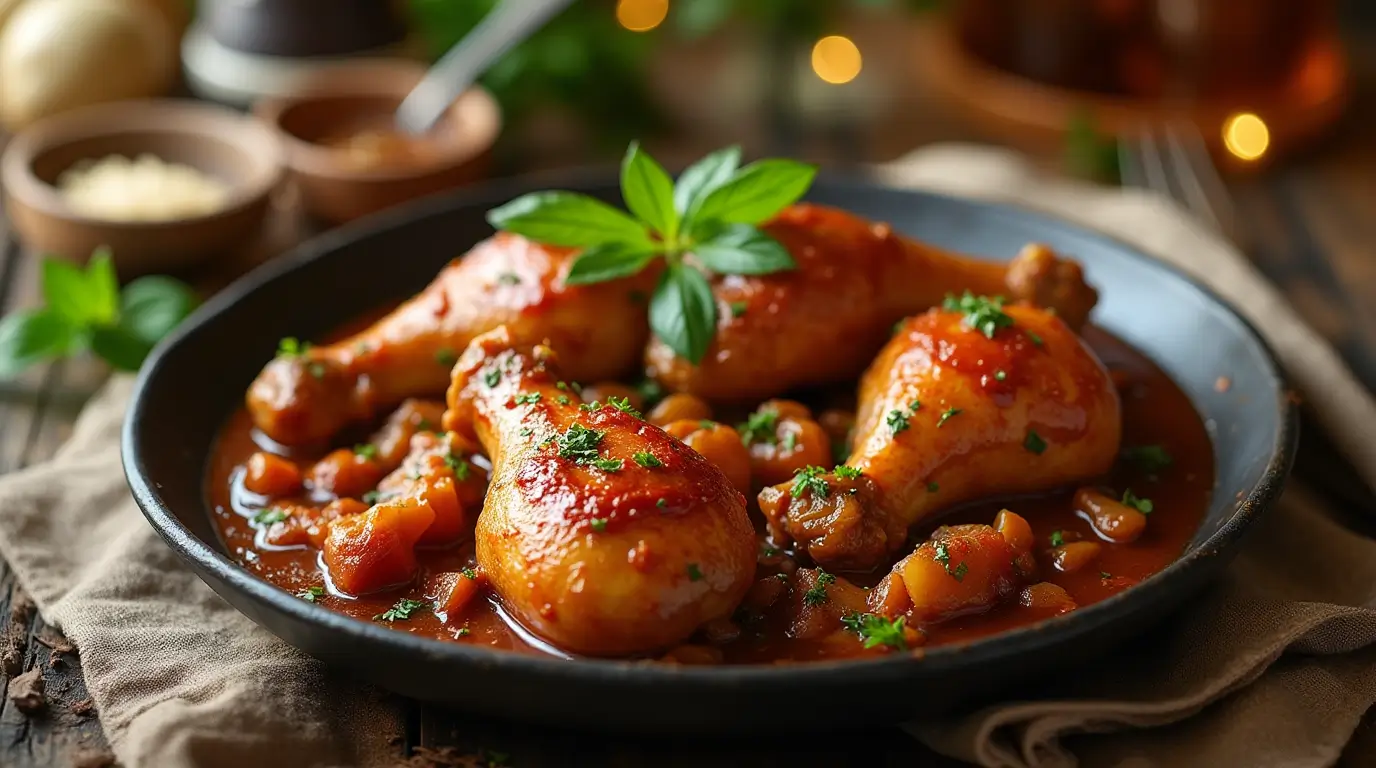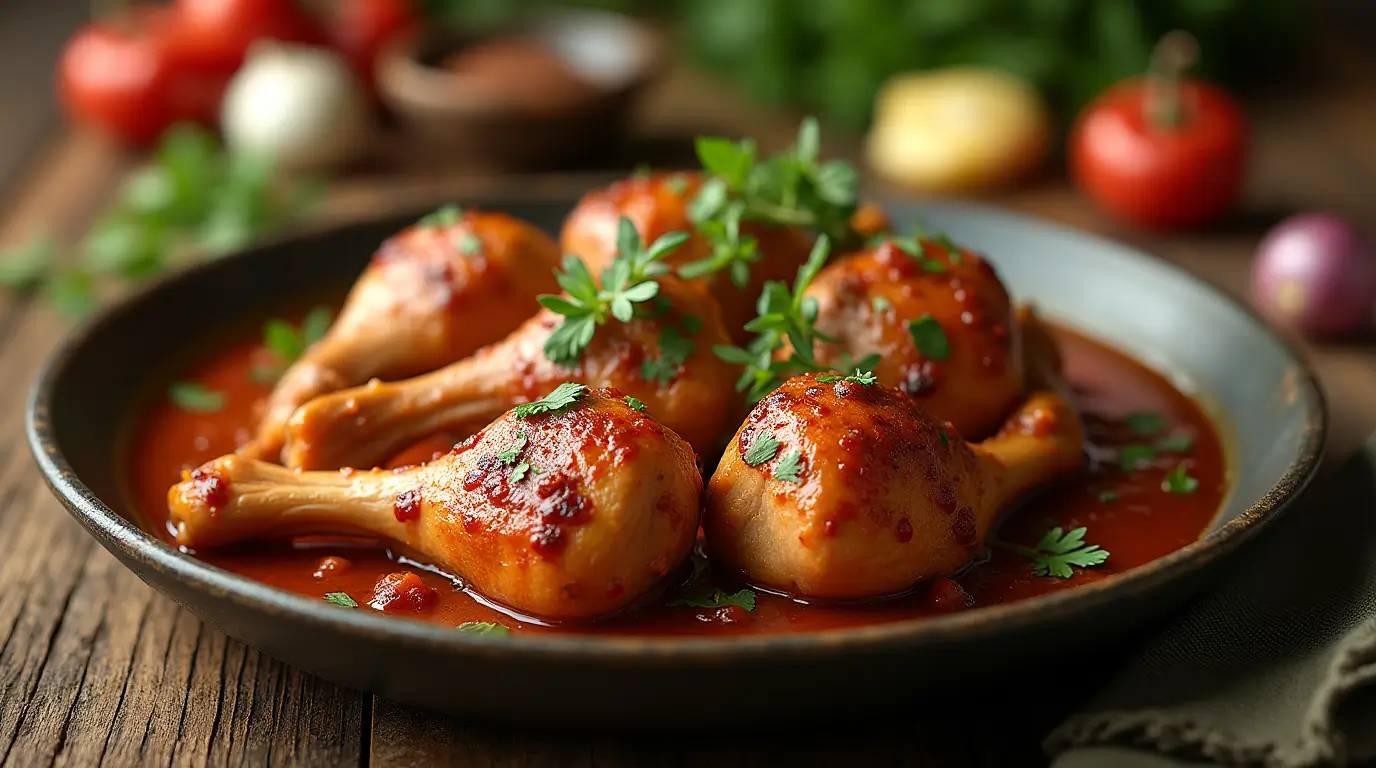- January 25, 2025
- by Isabella Carter
- 0 / 5
- Difficulty: Medium
- 95 View

- Prep Time20 minutes
- Cook Time2 hours
- Serving4
- Serv SizePlate
Turkey neck might not be the first thing you think of when planning a meal, but they’re a secret weapon for creating a rich, flavorful, and comforting dish. Packed with tender meat and plenty of nutrients, turkey necks are a versatile ingredient often overlooked. Whether you’re making a hearty stew, a delicious soup, or a crispy roasted main dish, this recipe will show you how to turn turkey necks into a culinary masterpiece.
What Are Turkey Necks?
Turkey necks are the elongated, meaty part of a turkey connecting the head to the body. While they might seem like an unusual choice, they’re actually incredibly flavorful thanks to their bone-to-meat ratio. Common in Southern, Caribbean, and Asian cuisines, turkey necks are used to add depth to soups, stews, and even grilled dishes. They’re also packed with nutrients like protein, collagen, and essential minerals.
Why You Should Try Cooking Turkey Necks
Cooking with turkey necks is a game-changer for anyone looking for an affordable yet delicious option. They’re perfect for slow cooking, which allows their rich flavors to shine. Plus, they pair beautifully with a variety of vegetables, spices, and side dishes, making them a versatile addition to your kitchen repertoire.
Ingredients for Turkey Neck
To create a mouthwatering turkey neck dish, you’ll need the following:
- Main Ingredients:
- 2 pounds of turkey necks.
- 1 large onion, diced.
- 3 cloves garlic, minced.
- 2 carrots, chopped.
- 2 celery stalks, chopped.
- 1 cup diced tomatoes (optional).
- 4 cups chicken or turkey stock.
- Seasonings:
- 1 teaspoon paprika.
- 1 teaspoon thyme.
- 1 teaspoon garlic powder.
- 1/2 teaspoon cayenne pepper (optional).
- Salt and black pepper to taste.
- Optional Additions:
- Potatoes, sweet potatoes, or beans.
- Fresh parsley for garnish.
Tools and Equipment Required
- A large pot or Dutch oven.
- A sharp knife for prepping vegetables.
- Measuring spoons and cups.
- A wooden spoon for stirring.

Step-by-Step Instructions: How to Cook Turkey Necks
1. Preparing the Turkey Necks
Start by cleaning the turkey necks under cold water and patting them dry with paper towels. If there’s any excess fat, trim it away. For added flavor, consider marinating the necks in a mix of olive oil, garlic, paprika, and thyme for at least 30 minutes.
2. Cooking Methods
Stovetop Stew Method:
- Heat a tablespoon of oil in your pot or Dutch oven over medium heat.
- Sear the turkey necks until browned on all sides. Remove and set aside.
- In the same pot, sauté onions, garlic, carrots, and celery until softened.
- Add your spices, followed by diced tomatoes and stock. Stir well.
- Return the turkey necks to the pot, cover, and simmer for 2-3 hours until the meat is tender.
Oven-Roasted Method:
- Preheat your oven to 375°F (190°C).
- Season the turkey necks with a spice rub.
- Arrange them on a baking tray with chopped vegetables.
- Roast for 1.5-2 hours, turning halfway through, until golden and crispy.
Slow Cooker Method:
- Layer the turkey necks, vegetables, and spices in the slow cooker.
- Add stock and cook on low for 6-8 hours.
3. Adding Vegetables and Spices
Midway through cooking, taste the dish and adjust the seasoning. Add in potatoes or beans for a heartier meal. Stir gently to ensure even cooking.

Tips for Making the Perfect Turkey Neck Dish
- Cook Low and Slow for the Best Results
Turkey’s necks are naturally tough because they come from a hardworking part of the bird. To unlock their full potential, cook them over low heat for a long time. Whether you’re simmering them on the stovetop, slow-cooking, or roasting, this method ensures the meat becomes tender, flavorful, and falls off the bone. Avoid high heat, as it can lead to chewy, tough meat. - Don’t Skimp on Seasoning
Turkey necks have a rich flavor that’s enhanced by a generous use of spices. Start with a base of salt and black pepper, then add layers of flavor using garlic powder, paprika, thyme, and even cayenne pepper if you enjoy a bit of heat. For a deeper flavor, consider marinating the necks overnight in your spice mix along with some olive oil or vinegar. - Serve with Complementary Side Dishes
The right sides can elevate your turkey neck dish from good to exceptional. Crusty bread is perfect for mopping up stews or gravies, while creamy mashed potatoes balance the richness of the dish. Rice, quinoa, or even polenta also make great bases to soak up the flavors. For a Southern twist, pair it with collard greens and cornbread.
Serving Suggestions: How to Present Turkey Neck Dishes Like a Pro
- Pair with Vibrant Vegetables
Adding roasted or steamed vegetables not only complements the flavors but also adds a pop of color to your plate. Try carrots, green beans, or sautéed spinach for a balanced meal. - Create a Rustic Platter
If you’re serving for a family dinner or gathering, arrange the turkey necks on a large platter. Surround them with vegetables or sprinkle fresh parsley or cilantro over the top for a finishing touch. The natural appeal of the bones and tender meat creates a homely, rustic presentation. - Serve in Individual Bowls
For soups or stews, ladle the turkey neck dish into individual bowls. Garnish with freshly chopped herbs or a dollop of sour cream for added richness. - Add a Unique Twist
Consider incorporating elements like toasted bread croutons, grated cheese, or a drizzle of flavored oil over the top. These small additions can make the dish feel extra special.
Storing and Reheating Leftovers
- Proper Storage Techniques
Once the turkey neck dish has cooled to room temperature, transfer it to an airtight container. For soups or stews, make sure the liquid covers the meat to prevent drying out. Store in the refrigerator for up to three days. For longer storage, place the container in the freezer, where it can last up to three months. - Reheating Without Losing Flavor
Reheating turkey necks requires a gentle approach to maintain their tender texture and rich taste:- On the Stove: Place the dish in a pot or saucepan and heat over low-medium heat. Add a splash of broth or water to keep the dish moist.
- In the Microwave: Use a microwave-safe container and reheat on medium power in short bursts (30-60 seconds), stirring in between.
- In the Oven: For roasted turkey necks, reheat in the oven at 325°F (160°C) until warmed through. Cover with foil to retain moisture.
- Freezer-Friendly Tips
Before freezing, divide the dish into portion-sized containers. Label each container with the date and contents to avoid confusion later. Thaw frozen turkey necks in the refrigerator overnight before reheating for the best results.
Key Nutritional Benefits of Turkey Neck Recipes
Turkey Neck
- Rich in Protein: Supports muscle growth and repair.
- High in Collagen: Promotes joint health, skin elasticity, and a healthy gut.
- Essential Minerals: Provides iron for energy, phosphorus for bone health, and zinc to boost immunity.
- Low-Calorie Option: When prepared without excessive fats or oils, turkey necks are a lean source of nutrients.
Vegetables (Carrots, Celery, Onion, etc.)
- Packed with Vitamins: Carrots provide vitamin A for vision, while celery and onions are rich in antioxidants and vitamin C to support immune health.
- Fiber-Rich: Promotes healthy digestion and satiety.
- Low-Calorie: Adds volume and nutrients without adding many calories.
Stock or Broth
- Hydration: Contributes to overall fluid intake.
- Minerals and Electrolytes: A good-quality stock can be a source of potassium, magnesium, and sodium to support hydration and muscle function.
Spices and Herbs (Garlic, Thyme, Paprika, etc.)
- Garlic: Boosts immunity, reduces inflammation, and acts as a natural antioxidant.
- Thyme: Contains antibacterial and antimicrobial properties.
- Paprika: Rich in antioxidants and provides a touch of vitamin A.
Optional Additions
- Potatoes or Beans: Provides complex carbohydrates for energy and fiber for digestion.
- Tomatoes: High in lycopene, a powerful antioxidant, and vitamin C.
- Parsley (Garnish): Adds vitamin K for bone health and a fresh flavor.
Approximate Nutritional Values Per Serving (1 Portion of Turkey Neck Dish)
| Nutrient | Approximate Value |
|---|---|
| Calories | 300-450 kcal |
| Protein | 25-30 g |
| Fat | 10-15 g |
| Saturated Fat | 4-6 g |
| Carbohydrates | 15-25 g (varies with sides) |
| Fiber | 2-5 g |
| Iron | 2-3 mg |
| Calcium | 50-100 mg |
| Sodium | 400-600 mg |
Note: Nutritional values can vary based on ingredient choices, such as the type of turkey necks (skinless vs. skin-on), the amount and type of broth (low-sodium vs. regular), and the cooking method used (slow-cooking vs. frying).

Frequently Asked Questions
- Can you substitute turkey necks with another cut?
Yes, chicken necks or oxtails can work as substitutes. - How long do turkey necks take to cook?
Depending on the method, they take 2-3 hours to become tender. - Are turkey necks healthy to eat?
Absolutely! They’re rich in protein and collagen. - What sides go best with turkey necks?
Mashed potatoes, rice, or cornbread are excellent choices. - Can turkey necks be grilled?
Yes, they can be marinated and grilled for a smoky, crispy dish.




Leave a Review